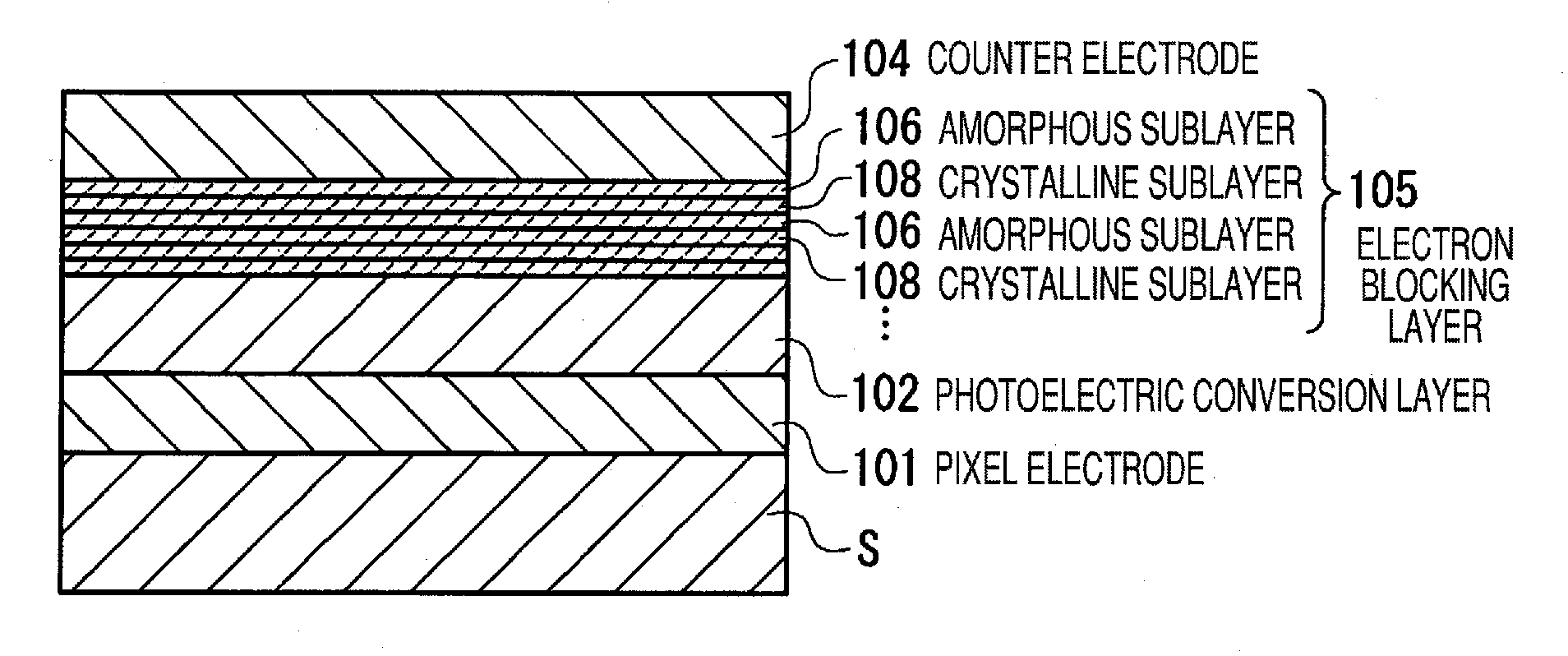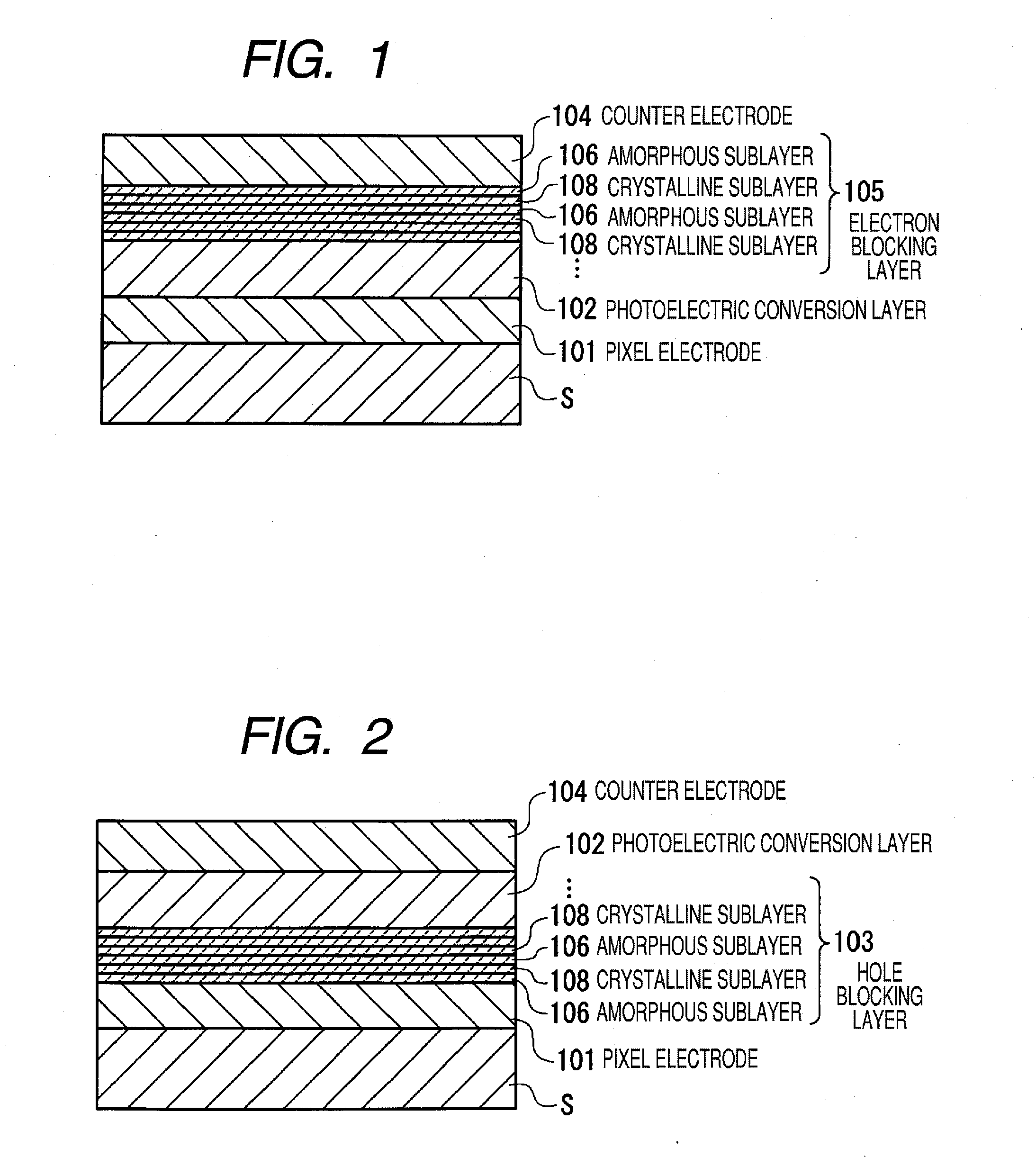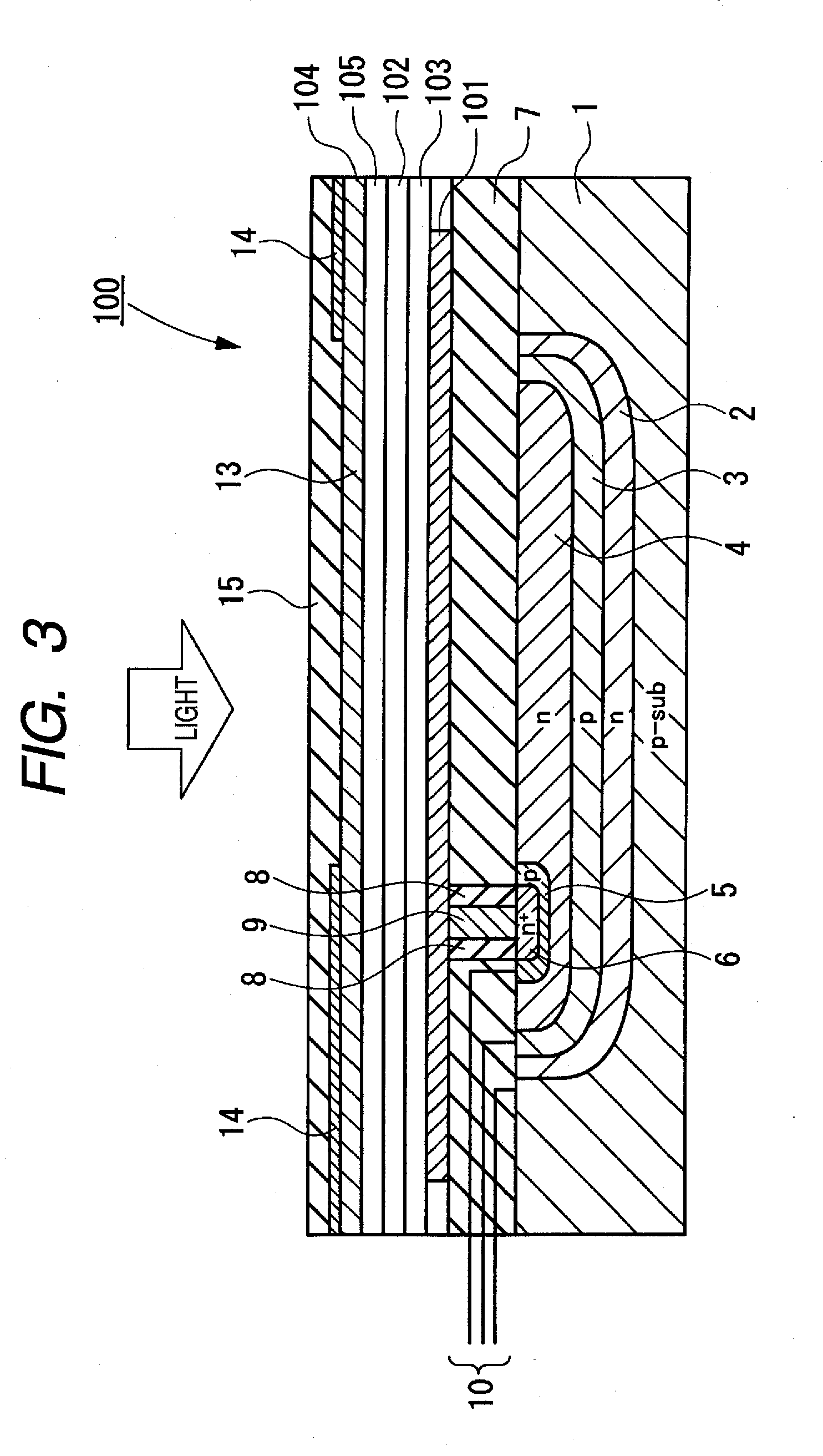Photoelectric conversion element and solid-state imaging device
a technology of conversion element and photoelectric layer, which is applied in the direction of solid-state device, semiconductor device, organic semiconductor device, etc., can solve the problems of reducing photoelectric conversion performance, deteriorating photoelectric conversion performance, and stress in the transparent electrode can crack or wrinkle the photoelectric conversion layer, so as to reduce the thickness of the electrode, prevent cracking, and reduce the effect of delamination or deformation
- Summary
- Abstract
- Description
- Claims
- Application Information
AI Technical Summary
Benefits of technology
Problems solved by technology
Method used
Image
Examples
first embodiment
[I] First Embodiment
[0031]FIG. 1 is a schematic cross-section of a photoelectric conversion element according to a first embodiment of the invention. FIG. 2 is a modification of the photoelectric conversion element of FIG. 1.
[0032]The photoelectric conversion element illustrated in FIG. 1 includes a substrate S, a lower electrode (pixel electrode) 101 formed on the substrate S, a photoelectric conversion layer 102 formed on the lower electrode 101, an electron blocking layer 105 formed on the photoelectric conversion layer 102, and an upper electrode (counter electrode) 104 formed on the electron blocking layer 105.
[0033]The photoelectric conversion element illustrated in FIG. 2 includes a substrate S, a lower electrode (pixel electrode) 101 formed on the substrate S, a hole blocking layer 103 formed on the lower electrode 101, a photoelectric conversion layer 102 formed on the hole blocking layer 103, and an upper electrode (counter electrode) 104 formed on the photoelectric conver...
second embodiment
[II] Second Embodiment
[0058]FIG. 3 is a fragmentary, schematic cross-section of a single pixel of a solid state imaging device 100 incorporating the second embodiment of the invention. Parts or members identified with the same numerals as in FIGS. 1 and 2 are identical.
[0059]The solid state imaging device 100 is composed of two-dimensionally arrayed pixels, one of which is illustrated in FIG. 3. One pixel outputs one signal that provides one pixel datum of image data.
[0060]The pixel of the solid state imaging device 100 shown in FIG. 3 includes a p type silicon substrate 1 and a photoelectric conversion element composed of a transparent insulating layer 7 formed on the p type silicon substrate, a lower electrode 101 formed on the insulating layer 7, a hole blocking layer 103 formed on the lower electrode 101, a photoelectric conversion layer 102 formed on the hole blocking layer 103, an electron blocking layer 105 formed on the photoelectric conversion layer 102, and an upper electr...
third embodiment
[III] Third Embodiment
[0068]The third embodiment provides a solid state imaging device of which each pixel is configured to detect two colors of light in a p type silicon substrate in which two photodiodes are not stacked in the substrate thickness direction as in FIG. 3 but arranged in a direction perpendicular to the direction of incident light.
[0069]FIG. 4 is a schematic cross-section of a single pixel of a solid state imaging device 200 incorporating the third embodiment. Parts or members identified with the same numerals as in FIGS. 1 and 2 are identical.
[0070]Each pixel of the solid state imaging device 200 illustrated in FIG. 4 includes a p type silicon substrate 17 and a photoelectric conversion element. The photoelectric conversion element is composed of a lower electrode 101 formed above the p type silicon substrate 17, a hole blocking layer 103 formed on the lower electrode 101, a photoelectric conversion layer 102 formed on the hole blocking layer 103, an electron blocki...
PUM
 Login to View More
Login to View More Abstract
Description
Claims
Application Information
 Login to View More
Login to View More - R&D
- Intellectual Property
- Life Sciences
- Materials
- Tech Scout
- Unparalleled Data Quality
- Higher Quality Content
- 60% Fewer Hallucinations
Browse by: Latest US Patents, China's latest patents, Technical Efficacy Thesaurus, Application Domain, Technology Topic, Popular Technical Reports.
© 2025 PatSnap. All rights reserved.Legal|Privacy policy|Modern Slavery Act Transparency Statement|Sitemap|About US| Contact US: help@patsnap.com



